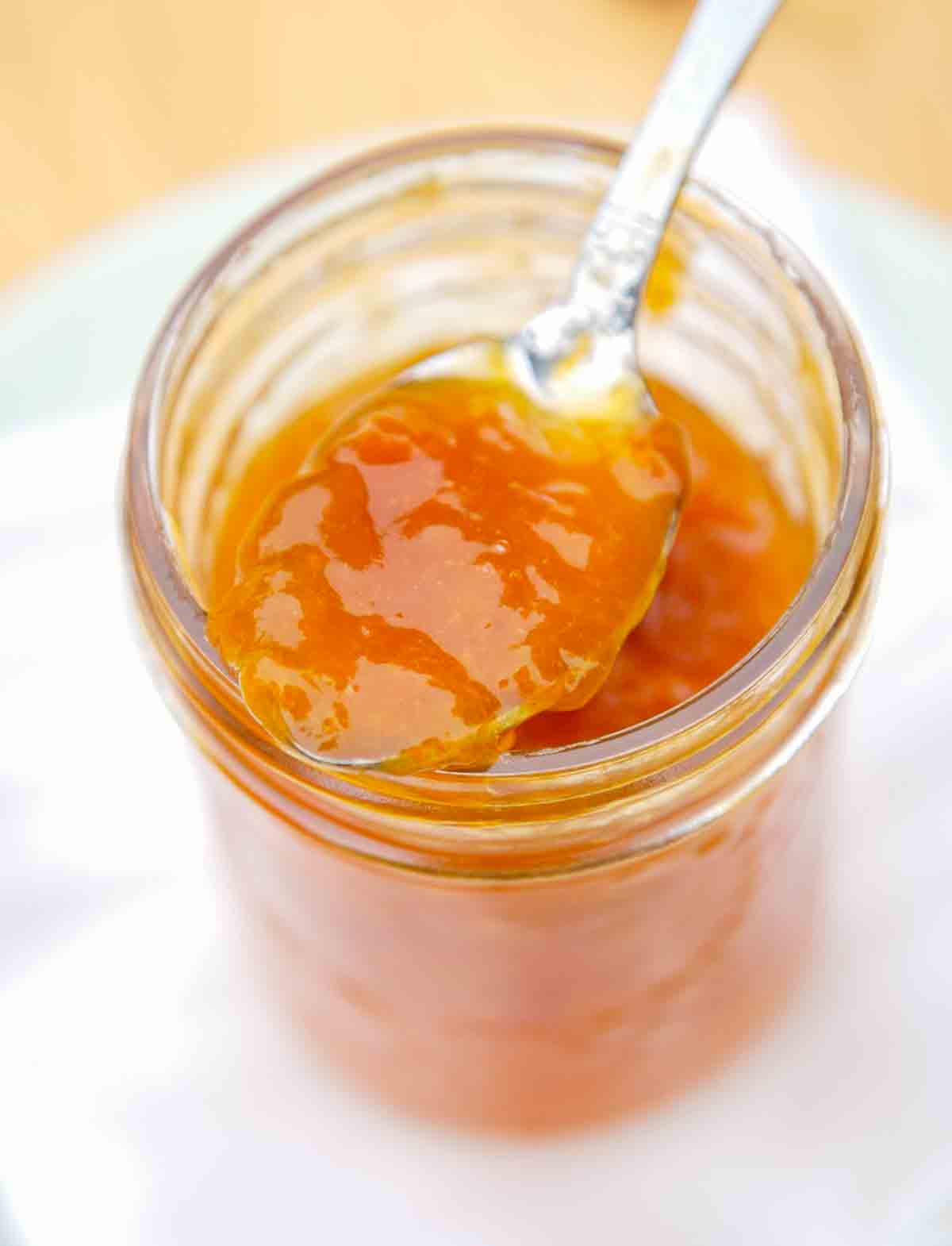
Apricot jam is something that makes the most of those truly ephemeral fruits, with only a few short weeks during summer when specimens can be scooped up and indulged in immediately and also preserved for the rest of the year. We’re going to stop typing now, as we’ve ripe apricots waiting on the counter calling out for us to linger over them at the kitchen sink, juice dribbling down our arms and kerplopping off our elbows and onto the floor.–David Leite
Apricot Jam FAQs
The options are truly endless, but here are a few of our favorites.
∙ Smear it on your toast
∙ Drizzle it over baked brie or goat cheese for an easy, impressive appetizer
∙ Use it to glaze a ham
∙ Jazz up roasted carrots
∙ Dazzle your guests with this pork with chanterelles recipe
There are a few methods you can use for testing if a jam is ready. The quickest is to scrape a wooden spoon across the bottom of your pot and if a line of separation stays visible for a few seconds, your jam is likely ready.
For a more specific test, you can measure the temperature on an instant-read thermometer. Jam typically sets at 220°F (104°C).
Lastly, a popular method for testing is to put a few small white plates in the freezer while you’re making your jam. When you think it is set, put a small spoonful on one of the plates. Let it sit for 30 seconds then nudge the jam and if it wrinkles up, it’s ready. If not, continue cooking for a few more minutes and test again with another plate.
Nope. Once the jam is thickened pour it into jars and stash in the fridge or freezer. Use within 3 months.
Pop that one in the refrigerator and use it first.
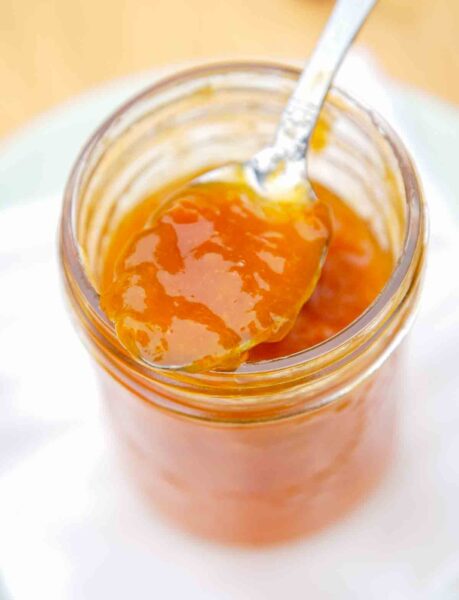
Apricot Jam
Equipment
- Three 8-ounce jelly jars with lids and screwbands
Ingredients
- 5 1/2 cups unpeeled, chopped, and pitted fresh apricots
- 2 tablespoons fresh lemon juice, (from 1 lemon)
- 1 1/2 cups granulated sugar
Instructions
- Prepare three 8-ounce Mason jars, lids, and screwbands for canning per the manufacturer’s directions.
- Place the apricots and lemon juice in a large stock pot. Add the sugar. Let the mixture sit at room temperature, stirring occasionally, until the sugar is mostly dissolved, about 1 hour.
- Bring the mixture to a boil over medium-high heat, stirring often.
- When it comes to a boil, reduce the heat to medium and simmer, stirring often and skimming any foam that rises to the surface, for 20 minutes or until the jam thickens and runs off the side of a spoon in heavy drops. Remove from the heat.
- Fill and seal the hot sterilized jars one at a time according to the manufacturer’s directions. Process the jars in the boiling water canner for 10 minutes. Store at room temperature for up to 1 year.

Nutrition
Nutrition information is automatically calculated, so should only be used as an approximation.
Recipe Testers’ Reviews
What a great jam this is! It tastes as apricot jam should—slightly tart and full of apricot flavor. I make apricot jam regularly and really like this version as it’s not cloyingly sweet like many of them are. I had to force myself to stop eating it with a spoon. This is a simple, great-tasting jam that anyone could make, even without any jam-making or canning experience.
I used 26 apricots which weighed 2 1/4 pounds. The jam thickened and jelled perfectly. As I have more apricots, my plan is to make this with lime or maybe infuse it with an herb such as sage, lemon thyme, or rosemary. However, it’s lovely as it is.
My mind is swimming with plans for this, including alongside baked country ham, seared duck breast, and on a charcuterie board.
This pectin free apricot jam was so easy! I didn’t jar any of it since I planned to use it all very quickly. The first day I made it the jam was good, but a day or two later it was even better.
This was a perfect treat to make bagged lunches much more special. I used some of the jam to make thumbprint cookies and Giada De Laurentiis’ apricot bars, but it’s also wonderful on a PB&J and on toast.
My first memory of apricot jam was when I was about 10 years old. I was home from school for the summer and wanted a PB&J sandwich. We must have been out of grape jelly, so I used apricot jam. I haven’t had many PB&J sandwiches since without apricot jam.
Apricots are little orbs of edible sunshine with their soft, fuzzy skin and delicate scent. The first bite always brings visions of warm sunny days. Summer can be had year-round when apricots are turned into a delicious jam.
I love apricot jam, but had never made it before. I like that the recipe uses less sugar than a lot of other recipes.
It’s great on toast and in recipes. Definitely a keeper.
This apricot jam recipe was easy and simple to follow. I filled a 500-milliliter Mason jar and had a little bit more. A very basic and good recipe for jam.
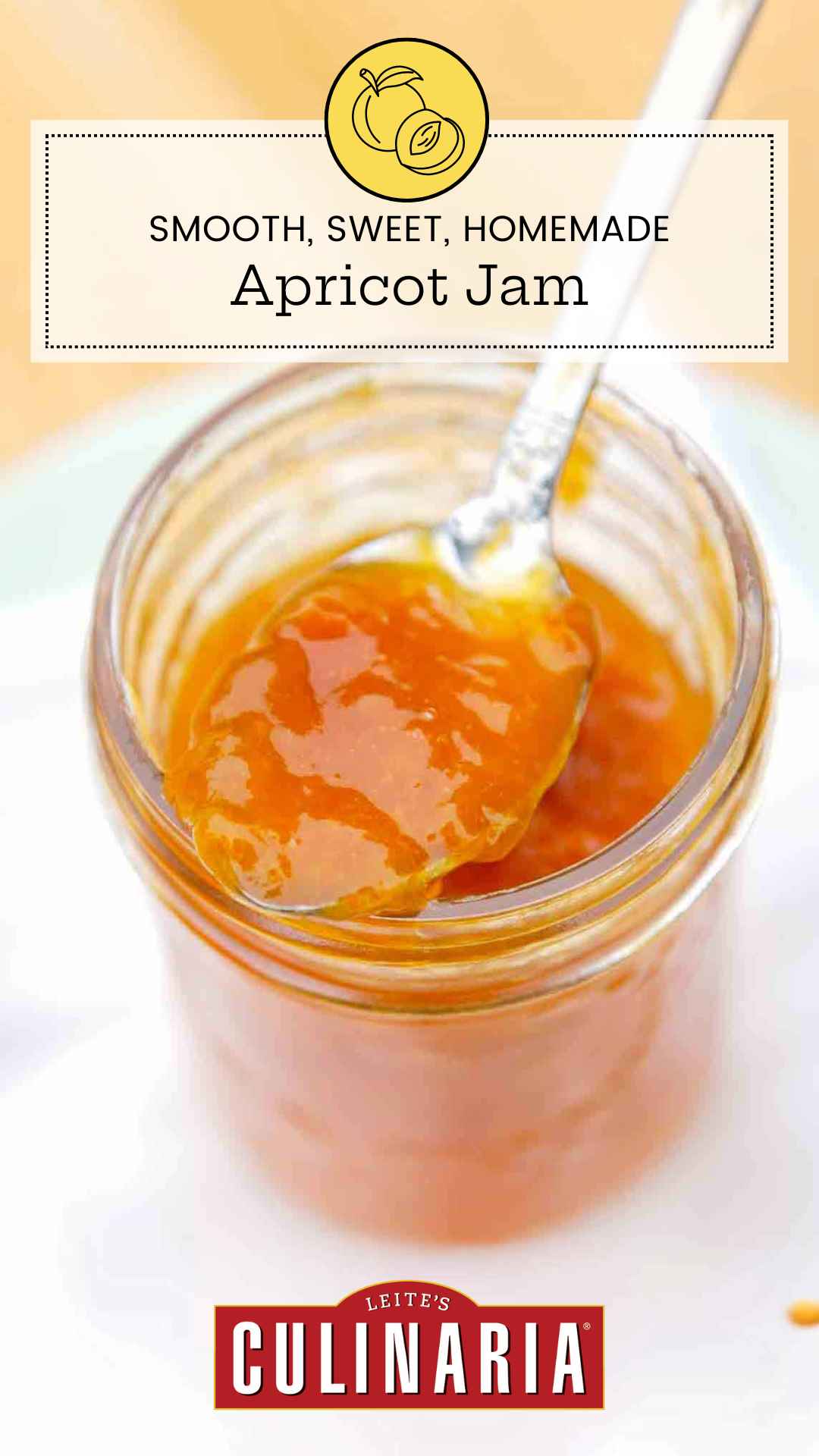
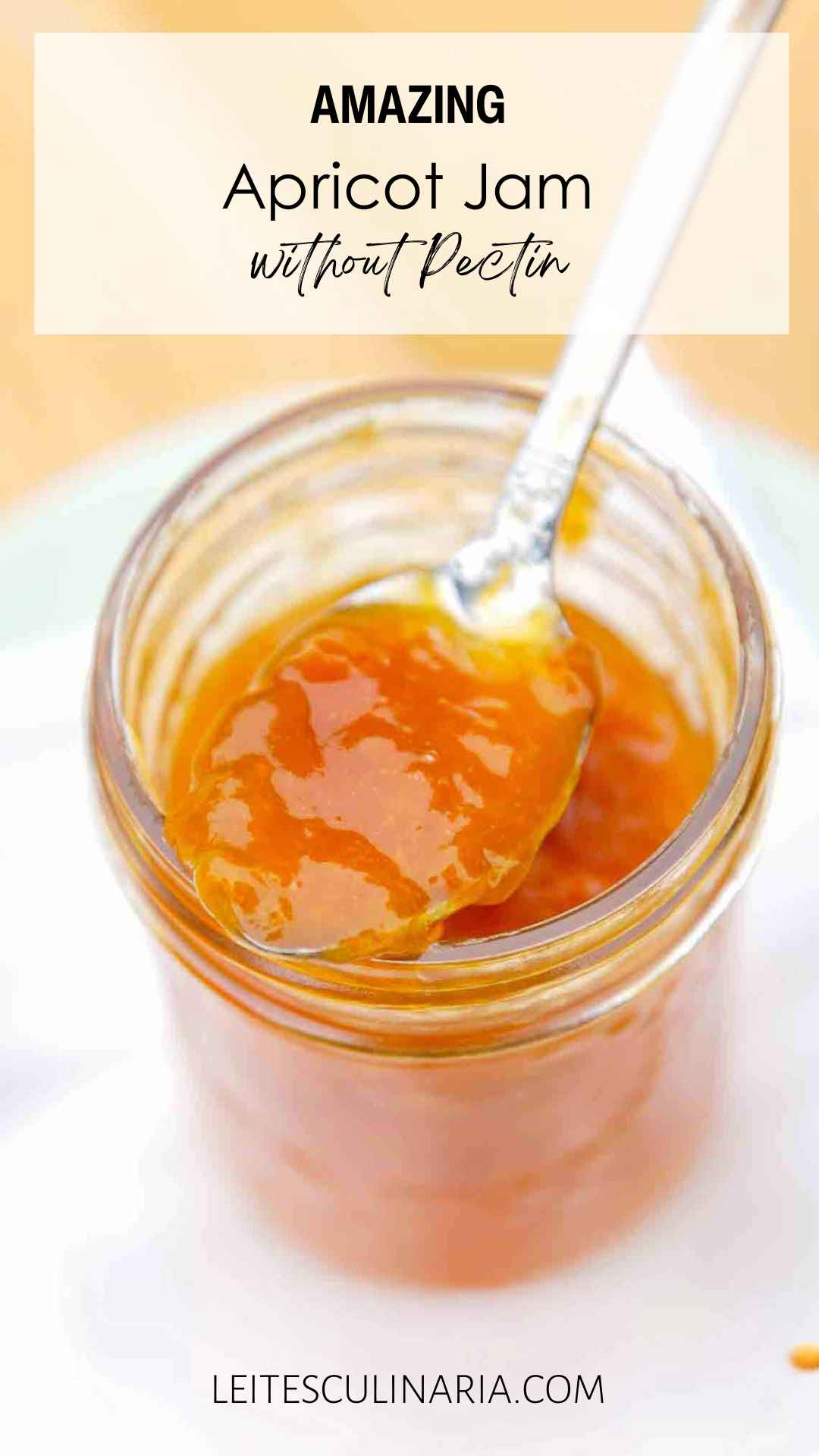
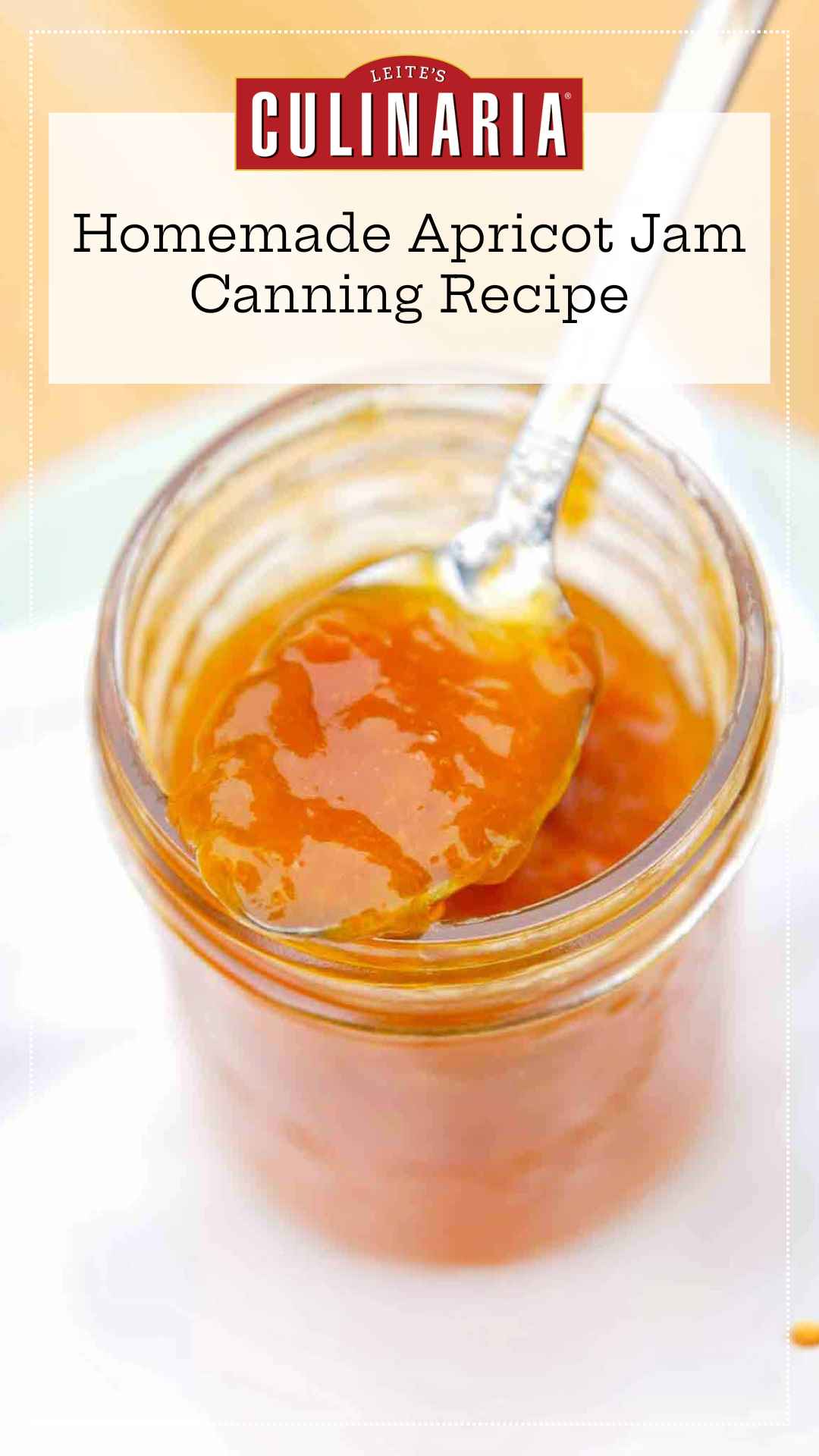
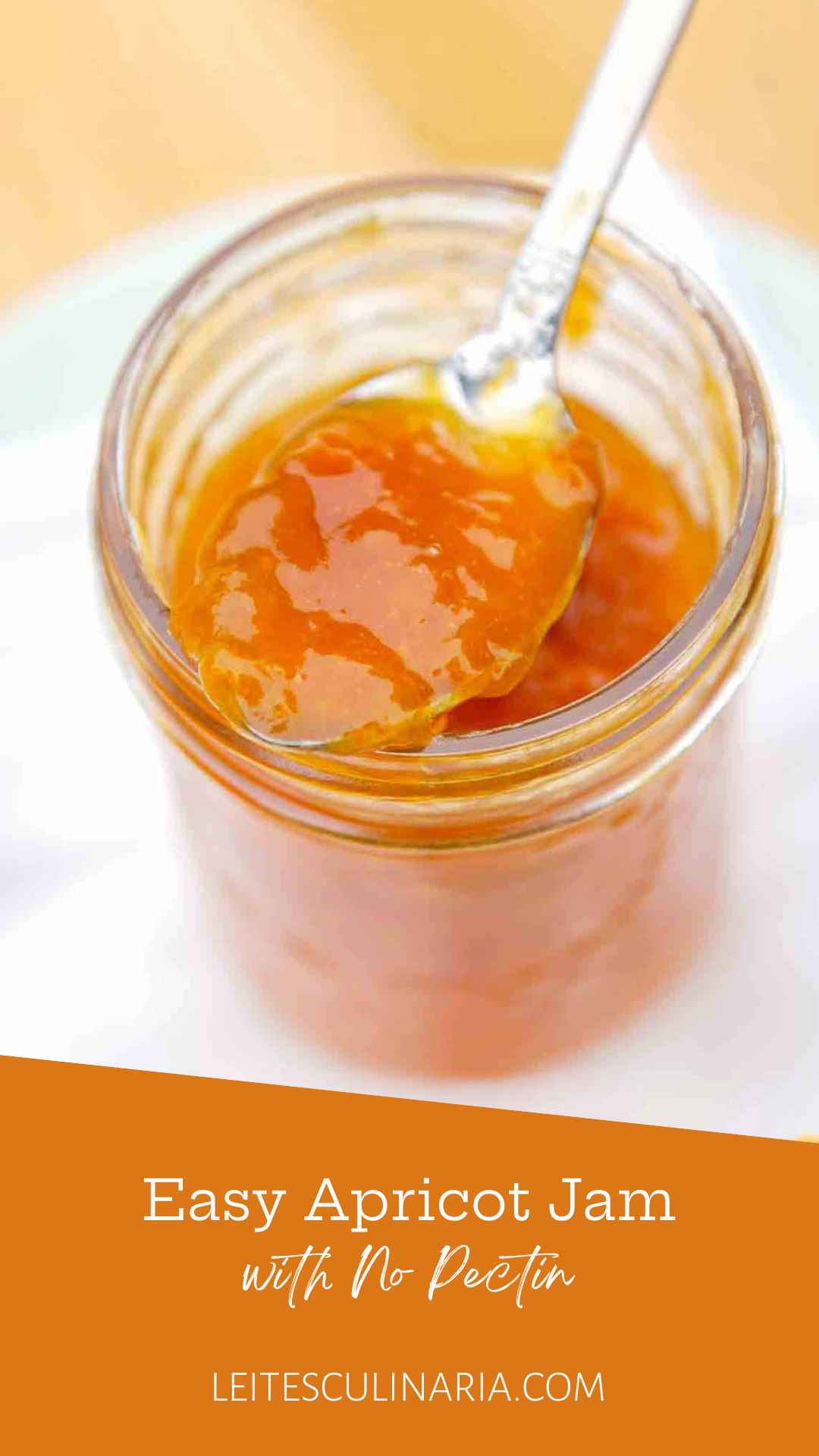
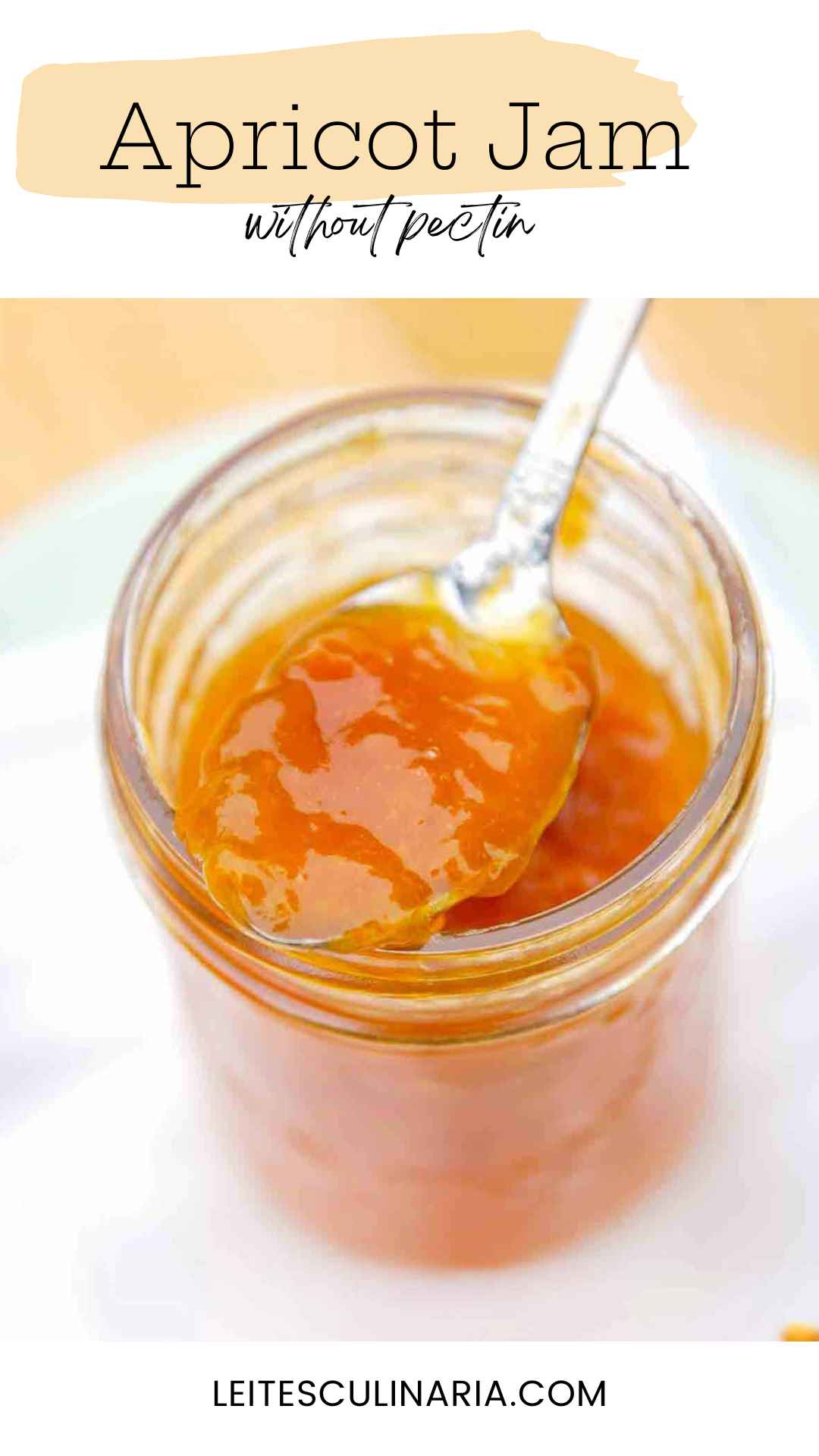
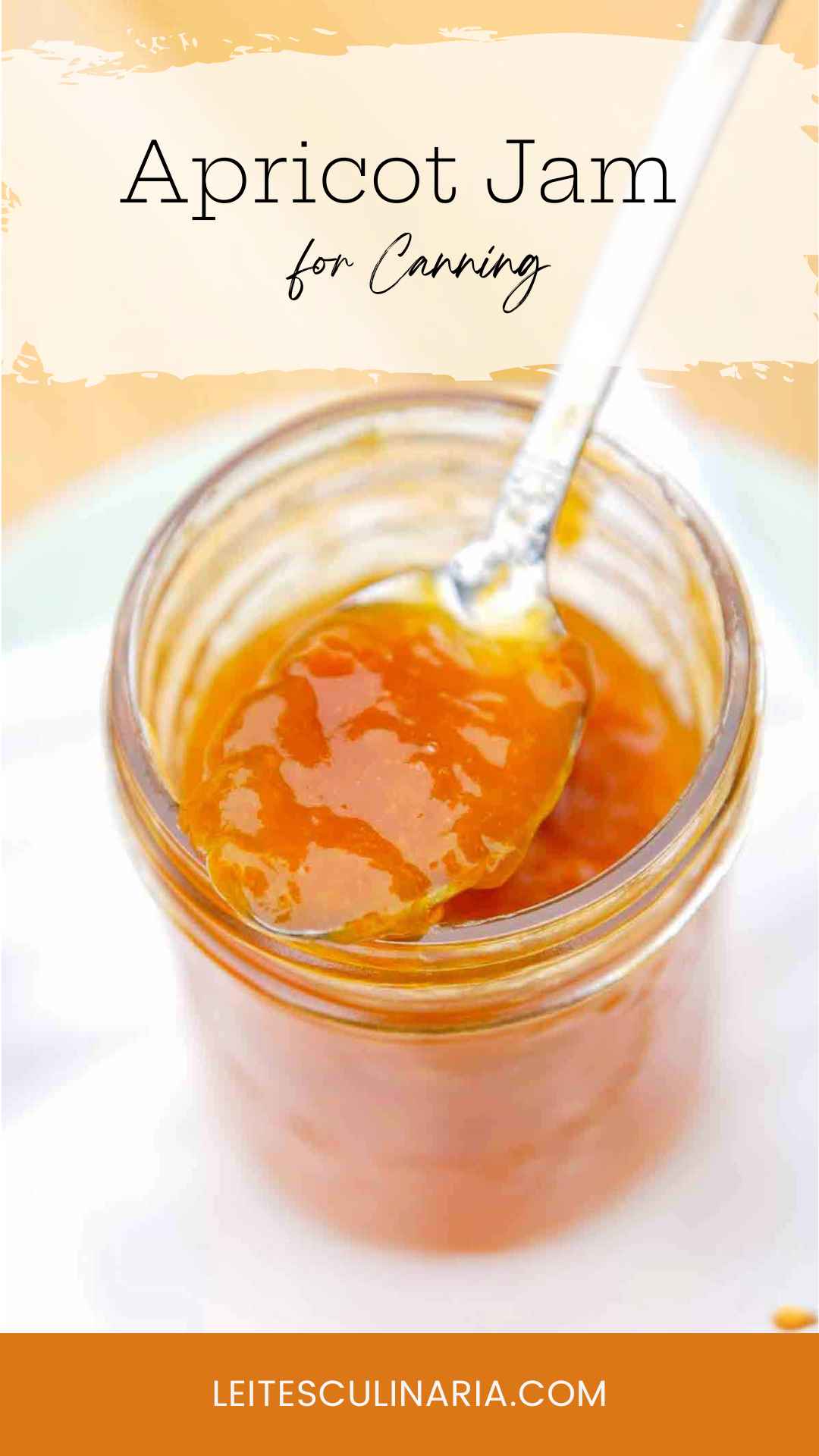






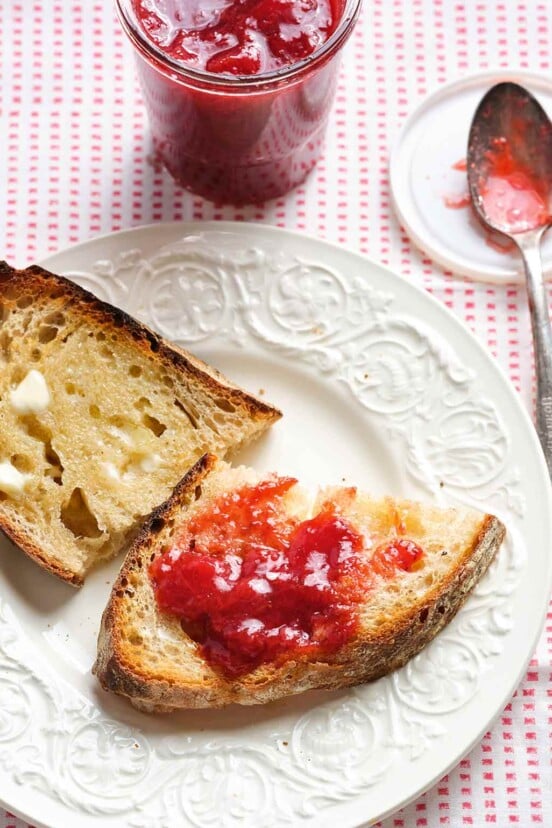









Can you substitute fresh orange juice?
Vicki, we didn’t test the recipe with orange juice, so we can’t say how it would turn out. I think the flavor would be great, but oranges are less acidic than lemons and you may have difficulty getting your jam to set.
How long does it store in the refrigerator once opened? Other jams I’ve tried with less sugar mold quickly.
Debbie, mine has always lasted at least a month, although it generally disappears before that. If you’re careful with not contaminating it with anything, it will probably be ok for a couple months.
Angie, thanks!😊
You’re welcome, Debbie.
I LOVE it!!!! It was so incredibly amazing. I hate not having enough apricot on my tree! I made it exactly the way you say to make it and it was incredible. I think next time I’ll add vanilla. I am about to try the same recipe with pricky/cactus pears! I like the fact that there is no pectin. To keep them I freeze them.
Mylene, so delighted you enjoyed the recipe! And please tell us how the prickly pear jam comes out.